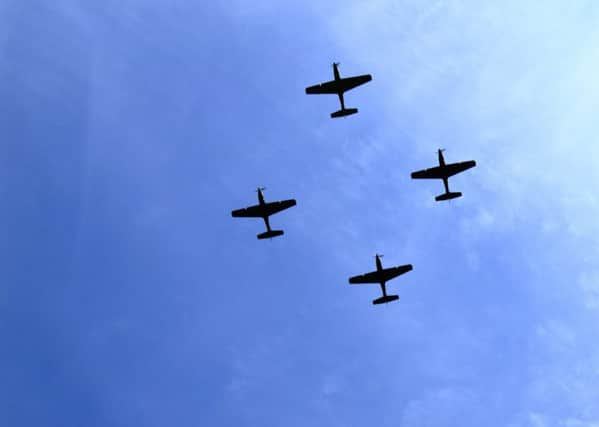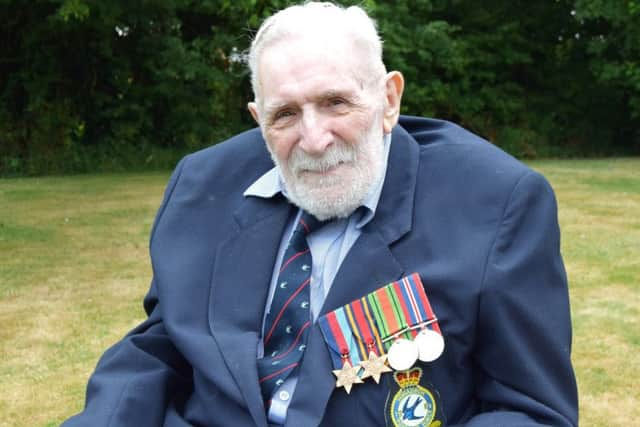RAF squadron's aerial tribute leaves Denmead veteran in tears


The 96-year-old is one of just seven surviving members of 72 Squadron to have served in the Second World War.
And to mark the centenary of the group’s foundation, a team of four Tucano planes roared over Cyril’s care home, Green Meadows in Denmead.
Advertisement
Hide AdAdvertisement
Hide AdThe proud pensioner was joined by about 50 residents and carers to watch the aerial spectacle.


He said: ‘Not only did they navigate to get to the right place but they flew in perfect formation, 250ft off the ground at 350 knots.
‘I was very proud of them.
‘It’s been a special moment. It gave me tears.’
The flyover was part of a UK-wide event by 72 Squadron to mark the group’s centenary.


Pilots flew along the coast from RNAS Culdrose, Devon, visiting Goodwood Aerodrome and Tangmere Military Aviation Museum before heading to RAF Odiham.
Advertisement
Hide AdAdvertisement
Hide AdAmong other veterans honoured was Spitfire pilot Owen Hardy, who watched with family in Tangmere.
Cyril joined the RAF at 17, on May 11, 1939. He was posted to 72 Squadron as a store keeper and helped keep the team’s planes fuelled and ready to fly.
In July 1940 he was sent to Burma to help with the fight against the Japanese who ‘cut through the country like a knife through butter’, he said.
Cyril was then posted to a research and development unit in India, where he was part of a team attempting to develop a new breed of bomb that would detonate on impact and not bounce off-target.
Advertisement
Hide AdAdvertisement
Hide AdHe left the RAF in 1947 and became a scientist specialising in nuclear magnetic resonance – skills he used across the globe to help develop clean drinking water.
Stacey Brakewell, manager at Green Meadows, said: ‘Cyril has made a huge contribution to where we are today. It’s an honour to have him here at our care home.’